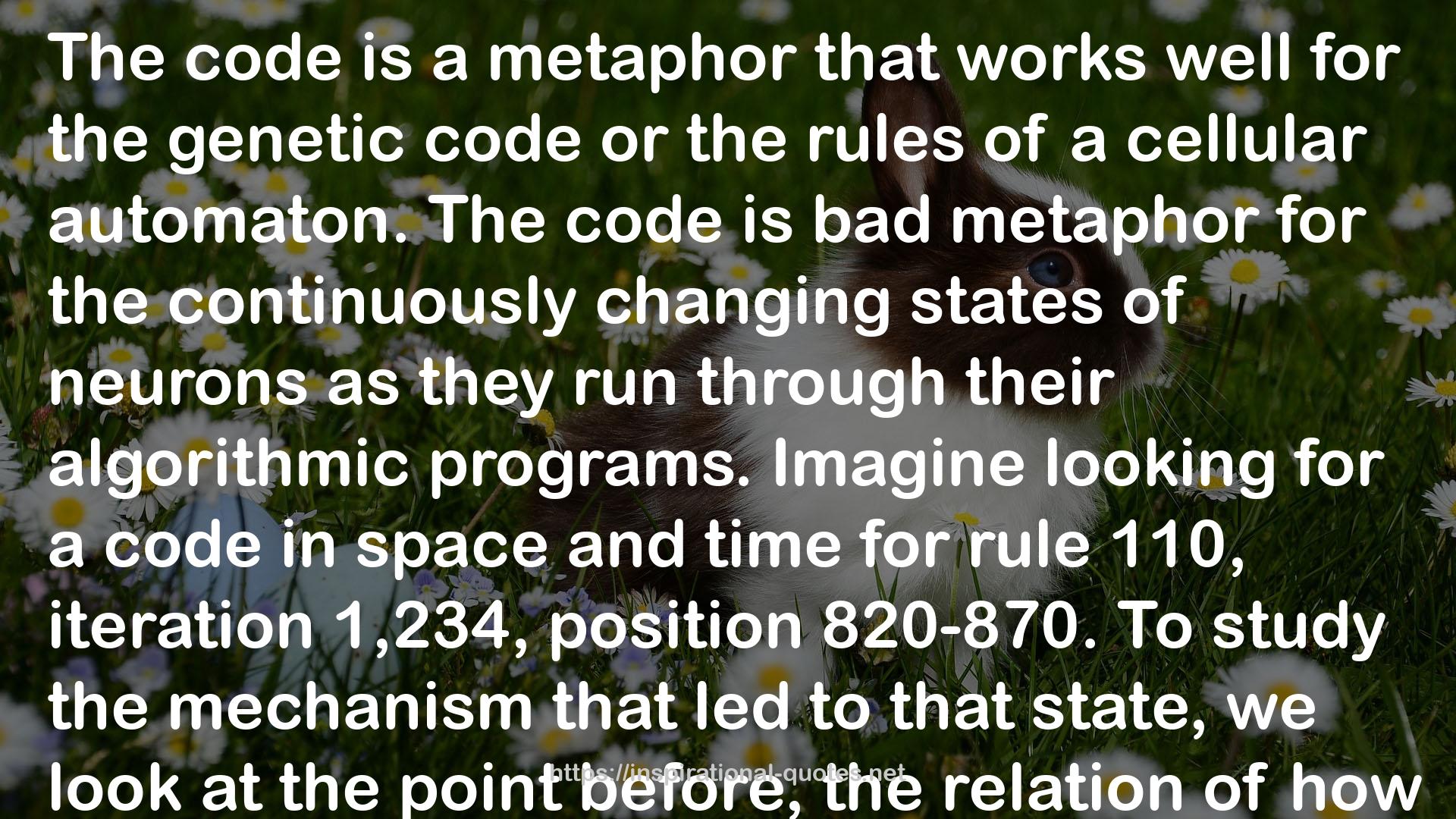" The code is a metaphor that works well for the genetic code or the rules of a cellular automaton. The code is bad metaphor for the continuously changing states of neurons as they run through their algorithmic programs. Imagine looking for a code in space and time for rule 110, iteration 1,234, position 820-870. To study the mechanism that led to that state, we look at the point before, the relation of how it happened, in all available detail. Is that useful? In the case of the rule 110 automaton, the same rule applies everywhere, so the instance reveals something general about the whole. This is the hope of the biological experiment as well. But what happens if the rule changes with every iteration, as discussed for transcription factor cascades? To describe changing rules of algorithmic growth for every instance in time and space and in different systems is not only a rather large endeavor, it also suffers from the same danger of undefined depth. It is a description of the system, a series of bits of endpoint information, not a description of a code sufficient to create the system. The code is the 'extremely small amount of information to be specified genetically,' as Willshaw and von der Malsburg put it, that is sufficient to encode the unfolding of information under the influence of time and energy. The self-assembling brain. "
― Peter Robin Hiesinger , The Self-Assembling Brain: How Neural Networks Grow Smarter
